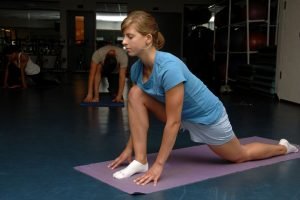Keep on moving
Joint health is a vital component in keeping you nimble and flexible well into old age. The body is a complex and intricate system. But in essence, the way the body moves is fairly simple.
Your bones and muscles act as a network of rods and levers. When the muscles (the levers in this analogy) shorten or lengthen, they cause the bones to move around. When the bones meet they form joints that allow this movement to happen.
However, if the joints become compromised or damaged, movement becomes more difficult and restricted. This can cause all sorts of health issues as you get older.
But there are many small changes you can make to keep your joints healthy and your movement and flexibility optimal into old age.

Joint health
Joint health – what to look out for
Looking after your joints starts by stopping the behaviours that are counter-productive to joint-health. Being sedentary will cause joints to stiffen. Joints like to be moved. So try and keep moving at regular intervals. If you spend any amount of time sitting, reading, watching TV or in front of the computer, take regular active breaks.
If it is convenient, you can set an alarm on your phone or watch to remind yourself to get up and move. Simply walking around or doing gentle stretches will have an enormous benefit over time. The key is to move little and often. It’s not just about thrashing around for half an hour in the gym and spending the rest of the time on your backside. Keep moving!
Also be aware that excess weight can put additional strain on joints. Even losing a small amount of weight can take pressure off your joints. In fact, every excess pound you lose equates to 4 pounds less pressure on your knees. So even losing a few pounds in weight can make a tremendous difference over time.
At the other end of the scale, some people punish their joints by over-doing it. Excessive training that leaves your body aching more than a day after training might be putting undue pressure on your joints.
Whether you are in training for a big event, or if you are just someone who likes to train hard, remember that progression should be gradual. The old adage of ‘no pain, no gain’ is more than just outdated, it can be downright harmful to your joints.
Lifestyle choices that help with joint health
There are two key lifestyle choices you can make that will dramatically improve your joint health; what you eat and what type of exercise you choose.
In terms of diet, the simplest thing you can do is add cold-water fish to your diet. Salmon and mackerel, in particular, are good sources of omega-3 and are beneficial to joints.
In addition, look to up your intake of Vitamin D and calcium. One of the best sources of calcium is green leafy vegetables (broccoli and kale are ideal choices).
Finally, longer term, low-impact exercises are better for joints. Walking, swimming, cycling and well-directed gym training are all beneficial. Or if you are looking for a different type of challenge, you could always try Pilates.
Whatever you do, ensure you look after your joints. They are far too important to neglect.
We hope this information is useful for you. If you have any questions about our treatments, please contact us. You can find us in Mill Hill Broadway and Islington. If you like this blog, please share! We are always happy to help.



